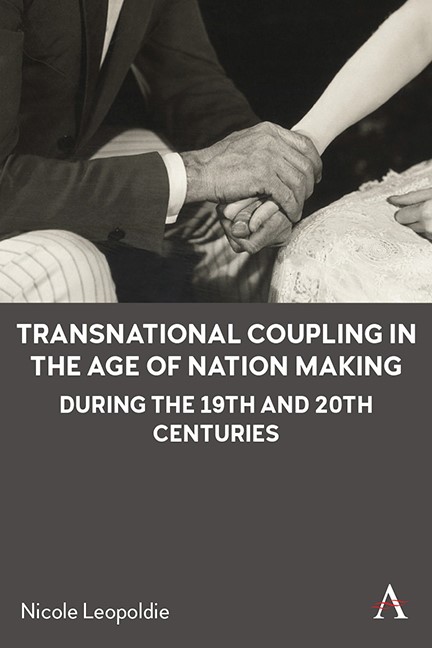Book contents
- Frontmatter
- Contents
- List of Figures
- Acknowledgements
- Introduction Marriage: National Borders and Personal Spaces
- Part I “Trading Titles for Treasure?”: Elite Marriages during the Nineteenth Century
- Part II “Paris is Free—and So Are Its Kisses”: Wartime Marriages during the Twentieth Century
- Conclusion
- Bibliography
- Index
Introduction Marriage: National Borders and Personal Spaces
Published online by Cambridge University Press: 15 November 2023
- Frontmatter
- Contents
- List of Figures
- Acknowledgements
- Introduction Marriage: National Borders and Personal Spaces
- Part I “Trading Titles for Treasure?”: Elite Marriages during the Nineteenth Century
- Part II “Paris is Free—and So Are Its Kisses”: Wartime Marriages during the Twentieth Century
- Conclusion
- Bibliography
- Index
Summary
Why do people marry? Or better: Why do they couple? While marriage and coupling practices seem to correspond with obvious biological and social necessities, a more targeted question might include: Why do they choose to couple or marry with the people that they do? And, what happens when they marry someone who is perceived as different from themselves?
Admittedly, such overgeneralized questions are, of course, accompanied by the underpinning assumption that the modern, Western social practice of marriage is largely accepted as a contract between two individuals based on both their free will and their affection for or commitment to one another. However, the cultural normative characterizations of both marital practices and courtship rituals show great variability in different historical contexts, and as Stephanie Coontz shows in her work, Marriage, a History: From Obedience to Intimacy or How Love Conquered Marriage, marriage as an emotion-based, state-sanctioned union is a relatively recent social invention. This leaves the task of defining marriage a difficult one. Over time, courtship and marital practices have taken many forms. In some contexts, to marry was a privilege, in others a necessity. Even in the present time, the tension between its dual meaning—both as a legal contract and as an emotional relationship— persists, and academic definitions vary. Anthropologist, Edmund Leach, for example, defines marriage as “a set of legal rules” that largely determines inheritance between generations. Coontz, by contrast, notes the limitations of this definition and goes further to define it instead as a social practice that “determines rights and obligations connected to sexuality, gender roles, relationships with in-laws, and the legitimacy of children.” However, no matter the changing legal or social characterizations, the practice of marriage has always, at its core, represented the connectedness of individuals—connectedness between participants, between families, between larger kinship and social networks, and even between societies. The marriages that make up the subject of this work transcended national, cultural, and linguistic boundaries and connected individuals across the Atlantic.
- Type
- Chapter
- Information
- Publisher: Anthem PressPrint publication year: 2023

